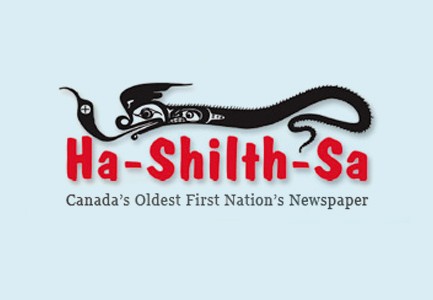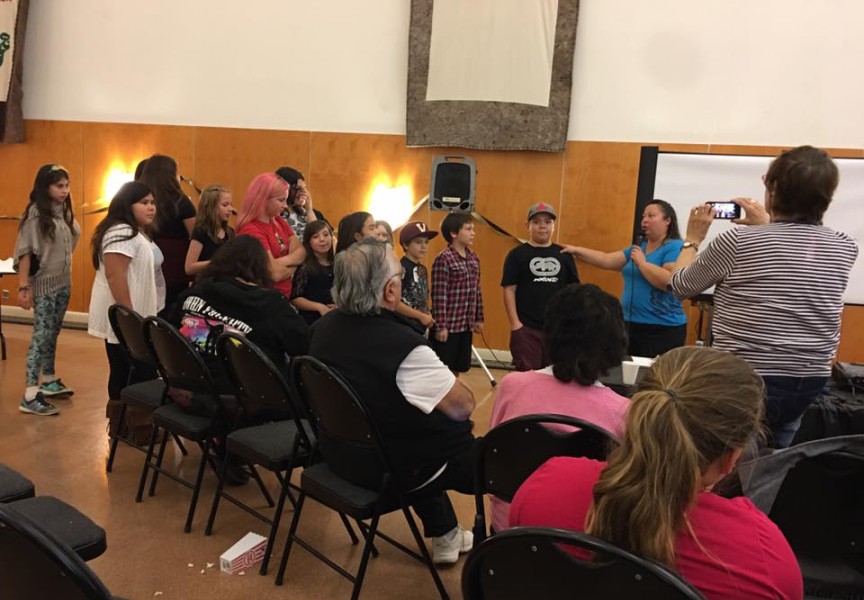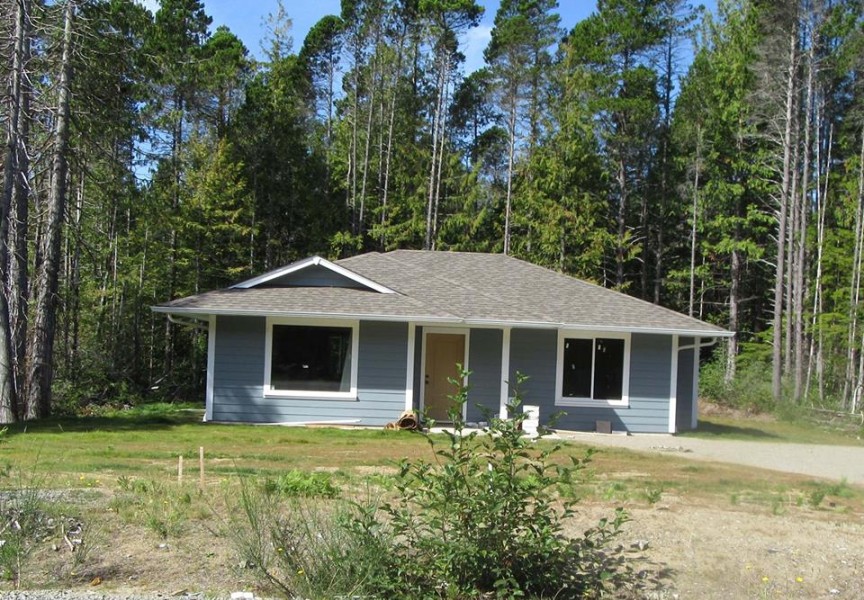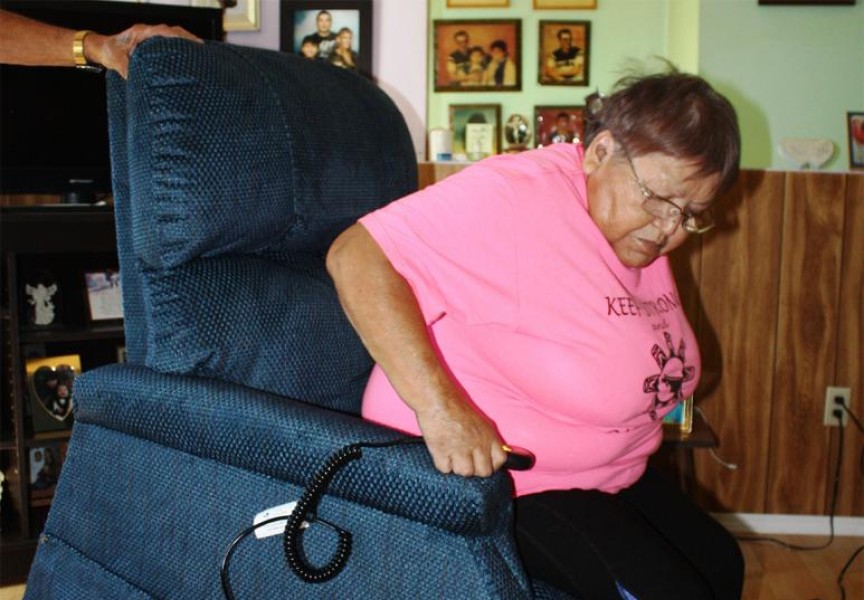Of the $45 million for infrastructure projects currently on the books for Nuu-chah-nulth Nations, to be completed over the next seven years through the Capital Programs department of the Nuu-chah-nulth Tribal Council, 40 per cent is to improve water and waste water-related systems, said Doug Neff, director of Capital Programs.
Neff’s full-time role is a rare (maybe even unique) position for First Nations across Canada. He is responsible for portfolio and project management of community infrastructure projects within the Nuu-chah-nulth region.
Some First Nation organizations have technical advisors, but none (that we know of) have a staff position that looks after capital management and technical pieces. Essentially, said Neff, the role is to identify all the community infrastructure needs, and ensure all the strategic planning is in place to develop and manage all the capital and community assets in each of the Nuu-chah-nulth communities that access his services. Those assets include housing, roads, water and waste water and communications connectivity.
On the water and waste-water file, the Capital Programs department (made up of Neff alone), is extremely busy.
Nuchatlaht, a remote community in the northern region of Vancouver Island, is at the beginning stages of a new project, with a feasibility study completed in the last fiscal year to identify a community-based waste-water disposal facility.
Currently, the homes in Nuchatlaht have individual septic fields, which have started to fail. This community is located right over top of its aquifer, and that situation has constrained Nuchatlaht’s ability to grow.
“We don’t want to get into a situation where we contaminate their drinking water,” Neff said. “So, we are locating a site, a ground disposal field, off-reserve for disposal of their waste-water.”
The project entails installation of all new community-based gravity-drained collection pipes that will go to one pumping station which will pump all the effluent to a force main off site and to a large septic field located on provincial Crown land. The community will be securing tenure for the site of a clear-cut located away from the community’s aquifer.
The project anticipates an additional 10 homes over the next five years, and a total of 20 homes over the next 20 years. Planning for such waste-water projects works with a 20-year design horizon, because that’s about the life-span of the systems involved, said Neff.
The design application for this project will be submitted to Indigenous and Northern Affairs Canada in May, and construction is targeted for the 2017/18 fiscal year at a cost of $1 million.
There are 11 homes in the community now, six of which are 32 years old, with the remainder built in the 1980’s and 90’s. Of these newer houses, the septic fields are failing well before they should.
Remoteness is part of the problem. Nuchatlaht is more than 200 kilometres away from the nearest small city—Campbell River—with a stretch of that travel on a logging road. Service of these fields may not be getting attention as often as they should. The remoteness factor adds cost to any project, sometimes as much as 30 per cent to some communities accessible by air or water only, Neff said.
“You have to work hard to find folks that are willing to work that remote. And when you find them, often there’s a surcharge attached to them.”
One benefit of the project is that the Nation won’t have to deal with the maintenance of individual septic fields anymore. There is presently no operation or maintenance dollars for individual septic fields, but there is for a larger community system, Neff said.
At the completion of the project there will be two people in the community trained for their small waste water operators’ certificates through Indigenous Affairs. They will trouble shoot and do daily tasks at the site.
In Ehattesaht, slightly closer to Campbell River up that same logging road, they have a waste water project that will partner with adjacent Zeballos.
Currently the 22 homes on reserve are equipped with gravity drained pipes. There is a pump station and a force main.
“So they have all the infrastructure that Nuchatlaht is getting,” said Neff. “What Ehattesaht doesn’t have is a disposal field.”
Currently Ehattes has a municipal-type service agreement with Zeballos where the Nation pays the village every quarter to pump sewage out to its septic field, but the growth of Ehattesaht has now exceeded the capacity of the septic field in Zeballos.
So rather than scrap that agreement and build some sort of septic facility in Ehattes, INAC will provide funds to increase the size of Zeballos’ field. Currently there are 102 people in Ehattes, and the field will accommodate a 20-year growth to 326 people, plus the village population.
The feasibility study was done in the 2015/16 fiscal year, with the design phase in the current fiscal year, and construction set for 2017/18. A $1 million price tag is attached. Zeballos is lead on the project, with the public procurement through Zeballos’ municipal process.
Mowachaht/Muchalaht First Nation, near Gold River, has a one-well water system in place. In 2014, on Thanksgiving weekend, their one pump failed and the community went without water for about eight days. So the project there is a water upgrade.
The design work was completed in 2015/16, and construction will happen this fiscal year. The project will install a second well “that will provide 100 per cent redundancy”, it will provide a new pump house and treatment facility (UV and chlorine), and increase the size of the community reservoir. The project is estimated to cost $1.5 million.
Water projects are designed for a 40 to 50 year time horizon. Currently there are 300 people living on reserve, with 61 residential units, and an estimated additional 367 members moving home in the next five to 10 years.
Hesquiaht, for the community at Hot Springs Cove, is preparing for an infrastructure replacement project at a cost of $2.2 million— water/sewer replacements of all the in-ground facilities and some of the waste water facilities.
“The distribution for the water and the collection of the water is all the stuff that’s in the ground… distributing it to all the houses and collecting all the waste water from the houses is all the original stuff constructed in 1972, so it’s aged, it’s dated,” said Neff.
This original in-ground system has failed in a number of ways. The installation wasn’t as up to par as it probably should have been, Neff said, and because of the design of the community, up on a rock bluff, and with 16 feet of rain in a year, the water tends to shed off and it’s torn away at some of the sands and materials in which the utilities have been embedded.
Some of the waste water lines have cracked, there’s been spills that need to be fixed, some of the valves in the road are cracked because it’s not a paved road there.
“When the water comes down the road, it tears all the rock and aggregate away from [the valves] and they are left standing up on the road, and then when a vehicle drives over… and it cracks the valve, now you have a water leak,” Neff explained.
“Water leaks are never a good thing. Not because you are wasting water, but because now your water pipe is open and you now have the opportunity to have contaminants in the water.”
While the rock blasting component of the project adds to the expense, the remoteness factor is a cost issue, because everything will be barged in. Hot Springs is about a 45-minute water-taxi ride away from Tofino.
While the population is not particularly large at Hot Springs Cove, there is a little bit of a growth factor built into the plan. And the project is asset replacement-driven because of the 44-year age of the system.
“At the end of the day, we have a problematic sewer system and we have a problematic water system. We need to replace them now…. Because there is always going to be people there… so, at the very minimum you need to ensure that you’ve got clean water and you’re safely managing the waste water.”
The design for this project is completed and the construction application will be heading off to INAC this fiscal year, possibly in May.
Ahousaht First Nation is going into the design phase of a waste water treatment plant project in this fiscal year, to meet new government regulations on effluent treatment. Located about a 30-minute water taxi ride from Tofino, this is the largest Nation of the 14 Nuu-chah-nulth Nations.
The project is anticipated to be complete by 2019. The cost will be close to $10 million. They are designing for a potential on-reserve population of 1,200. This will be a big facility, a lot of work and more complicated than the other projects, Neff said.
Still on the west coast, the Lost Shoe Creek water project, near the highway junction for Tofino and Ucluelet, is nearing completion. At a cost of $6.8 million, the project will bring clean drinking water to the Tla-o-qui-aht Nation’s reserves of Esowista and Ty Histanis, and supply water to Parks Canada’s conservation office, all the campgrounds and the day use facilities (Long Beach and Incinerator Rock).
Fifty per cent of the funding is coming from INAC through Tla-o-qui-aht and the other funding comes through Parks Canada.
Neff said government is leading this project, and he has minimal oversight, except to be there to protect the First Nation’s interests, to ensure there is no cost escalation or schedule creep. He expects the water will flow by June.
Before the project there was a single well at Lost Shoe Creek that supplied the Pacific Rim National Park. Parks Canada trucked the water to their day-use facilities. The project drilled two additional wells, and installed a pump house and a treatment facility.
The water will flow from an in-ground aquifer with a large water supply which is possibly re-charged by nearby Kennedy Lake, but surely by the extraordinary amount of rain to the region, which Mother Nature filters through in-ground sand, so UV and chlorine is all that’s necessary for treatment.
Ty Histanis and Esowista has a municipal-type service agreement with the District of Tofino to deal with waste water.
At the south end of Nuu-chah-nulth territories is Ditidaht, which is working on a water system extension and upgrade, currently in the design phase. They are looking to make improvements to wells and well heads and want to extend the system for additional homes. They are anticipating construction in 2017/18 or 2019. It has a cost estimate of $1 million.
Soon to be completed and off the books within days is the new water and waste water upgrades, with a brand new water treatment facility, at Hitacu for the Yuułuʔiłʔatḥ Nation.
Looking to the future there is a possible system for Hupacasath’s Kleekoot reserve. The idea is to pull water from Port Alberni. This will require involvement from neighboring Tseshaht, and that consultation has begun.






